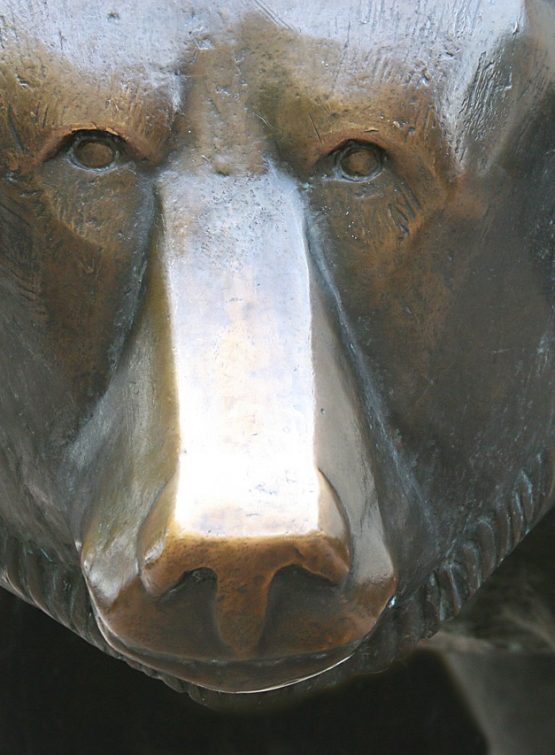Overview:
Investing is a much better way of putting our money into good use than saving in a bank. Irrespective of the country you reside in, investing in a high-quality stock for the long term provides better returns than the Bank interest rate. It is a known fact in stock markets that investing in Small Caps provides higher returns compared to Large Cap or Blue-Chip stocks. Why do many analysts and financial advisors not recommend small and retail investors to put money in Small Caps?
Most of you would know what is a Small Cap stock or a company. You can find my article on Market Capitalization. Basically, in India, it is a small company with a market capitalization of less than ₹5000 crores ($670 million). I do not know what other analysts or experts think, but there is a mystery associated with investing in small caps. The concept of good fundamentals would not always go well for Small Cap companies with a market capitalization below ₹1000 crores.
Normally, in Bull markets, Small Caps provide an excellent platform for making money investing in the midterm for 2 to 3 years. There are instances where the stock price has increased over multiple times. Simply put, they could be multi-baggers where share price would increase 50 to 100 times. Yes, even though it’s difficult to accept, the invested money would rise by 50 times or more. But, the chances of investors holding the shares till it reaches the maximum price are very rare.

Extreme Valuations of Small Cap Stocks:
In India, Small Caps are among the most neglected stocks. They are mostly used for intra-day trading and short-selling by big players and operators where the share price shoots up by 50% or more in a single week. As soon as the volume increases and trading catch momentum, small traders start buying these shares. After a certain limit or price, the share price starts crashing. It happens for two to three days where the share price gets back to its previous levels leaving the retailers in the trap.
To know what the reason for these ridiculous is price fluctuations, do watch the Hindi movie “Bazaar”. It is very well portrayed in the movie. “The Wolf of Wall Street” is another must-watch movie to understand what happens behind the screens of the stock markets. As it’s an A certificate movie, watch it in private.
Insider Trading:
It’s wonderfully depicted in these movies how Big Traders and High Net Worth Individuals with net-worth over thousands of crores rupees or billions of dollars can break a Small-Cap share in a single trade. One of the root causes is insider trading, which is suicidal for management and poor retail investors. Insider trading involves bribing the insiders or employees in prominent positions of the company for leaking sensitive information that may be groundbreaking, either positive or negative, for the company. As these big traders already know the information, they either buy or dump the shares in advance. Small retail investors are usually stuck in a trap with their hard-earned wealth erode in a share price crash.
Over-Valued Stock Markets:
Some of the stock market partisans will disagree with me. But it is absurd to believe that stock markets respond genuinely to the comments of the Prime Minister or the President. If they are so concerned about the nation and economy, Indian markets should not be in this frenzy Bull Run. Again, some people comment that my article is based on imagination and low on facts. India-China border tensions, ban of the Chinese goods, rise in Coronavirus cases, declining GDP, increasing unemployment rate, closing businesses, etc. Aren’t these facts enough? Do you need a World War or what?
After being in this field for over four years, I get to know who favor the bullish view or a bearish trend. When I say that markets are overpriced and fundamentally weak, I get wooed by those people who held Long positions. I don’t know how to answer when people comment that the P/E ratio does not matter as evaluation anymore. Maybe it is not significant to traders and speculators, but it does matter to long-term investors.
An Example of a battered Small Cap Stock:
Let us discuss an example of a fundamentally strong bargain Small-Cap stock that’s getting hammered over the last nine months. Shemaroo Entertainment is engaged in the distribution of content for Satellite Channels, Physical Formats, and Emerging Digital Technologies like Mobile, Internet, Broadband, IPTV, and DTH among others. It is one of the leading OTT content providers in India. It has been in the business for over 50 years. I have provided two images depicting the fundamentals and stock price performance for a year.

Its share price started falling since October 2019 from ₹245/- to ₹140/-. After the December 2019 quarter results, it plunged to ₹40/- in March 2020. Exactly, a year ago, it was trading at ₹340/-. Now, it’s trading at ₹63/- at P/E ratio of 2.63. No matter how much I tried to figure the reason for this extreme evaluation, I couldn’t find the answer till now. The poor management had to withdraw their idea of raising funds through debt after the abysmal crash. If you compare the E.P.S, it’s ₹23.9/-, which is more than the E.P.S ₹20.74/- of DMart share that’s trading at ₹2295/-.

We can’t say what’s the exact reason, but isn’t there something fishy about it? There are many good quality small caps like these priced ridiculously low. Normally, for small caps, the share price increases after an IPO and then continue with their earnings performance. One bad quarter is enough for crashing otherwise a good quality stock. Same Shemaroo share was trading at ₹500/- for a similar E.P.S two years ago.
Conclusion:
Maybe these small-cap shares will turn out to be multi-baggers in the next 3 to 5 years. Or otherwise, they may even plunge further. Either way, it gives an excellent opportunity for the promoters to increase their holding percentage. Before investing in Bargain small caps, do check whether the promoter is on the rise or not. If promoters are increasing their holding, it means they are confident of the company. You can use it as a guide for investing. Also, check whether it’s a Bargain stock with low Debt to Equity ratio.
I recommend new and retail investors to approach Equity Analyst or Financial advisor before investing in such small caps.
Note:
I provide the information and my views on the website only to educate people, new investors, and stock market enthusiasts on equity and other market investments. Please consult a SEBI registered financial advisor before making any investments in the stock or commodity markets. In case of any queries, you can contact me on Contact Form or email: admin@valueinvestingonline.in.




